Malaysian rivers have a fish that preys on… people?? Meet the Ikan Tapah
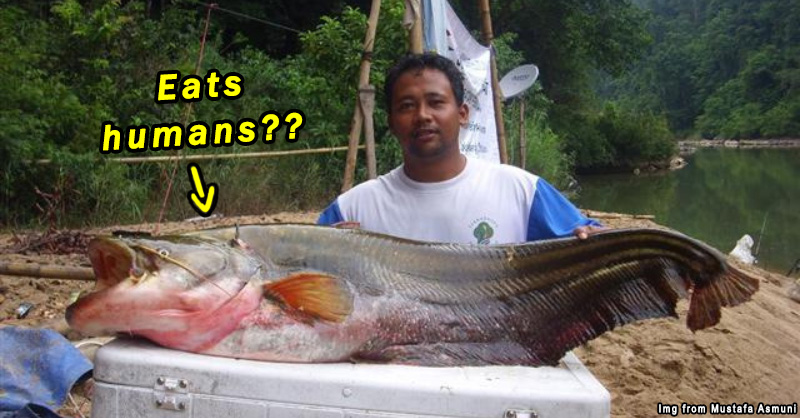
- 859Shares
- Facebook527
- Twitter39
- LinkedIn32
- Email54
- WhatsApp207
Just recently, I had the opportunity of visiting KL’s very own Zoo Negara. While most these days go looking for the newly added pandas, a certain catlike fishy in one of the aquarium exhibits caught my eye: The Great Tapah, otherwise locally known as the ikan tapah.

I recalled hearing about this fishy from a while ago, back when I was a kid watching a fish-catching TV show called River Monsters (2009-2019) hosted by the one and only, Jeremy Wade. This man single-handedly made me a nerd for big fish, and I love him. Sad to say, but the episode the tapah was featured in turned out to be the show’s last episode ever, which made me shed a tear at the time ngl.
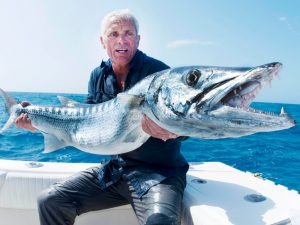
Thus, I was in Zoo Negara staring into the eyes of this BIG ASS fish that I didn’t know much about. Except that it had a Malay word for a name rather than an English one like all the other fishies. I thought to myself, why is that? To satisfy my lil curiosity, I did some good ol’ research and unexpectedly found out…
The town of Tapah, Perak is named after this species of catfish
According to the Tapah District Council’s very own website, yes, the whole town was named after this big boi species of a catfish. Locals however, have something else to say. Some claim instead, the name ‘Tapah‘ was derived from a Perak-Malay dialect meaning, “never mind”.
Do you see it? Tapah = takpe. Just say takpe faster and faster.
Scientifically so, the Great Tapah is named the Wallagonia leerii. It’s scientific name plays a big role in differentiating it from the Wallago attu, a similarly looking catfish species which also shares the term of ikan tapah with the Great Tapah.

Since the two catfish species live alongside each other, the two are commonly mistaken for one another as well. Although they look pretty much the same to us regular folks, one big difference makes it simple to differentiate the two. Size.
Its massive size inspired a fearsome reputation in folktales
Comparing Wallago attu and Wallagonia leerii, the latter is known to grow much larger. Unlike the Wallago attu, which normally does not grow beyond a meter, the Wallagonia leerii can grow up to 2 meters in length while weighing in above 80 kg.
Due to their size, local communities have told cautionary tales about them for years. Some accounts have them preying on ducks and small dogs, while more monstrous rumors have them preying on small cows and even humans. Yikes.

Just recently in 2017, a fisherman managed to snag a 58 kg beast in Batang Baram, Sarawak. 3 years before that, a truly tremendous 78 kg monster was caught in Sungai Lengkur, Pahang.
To catch one of these, Orang Asli fishermen recommend the use of a common catfish species called the Clarias, more locally known as the ikan keli. This is due to a folktale which suggests the ikan tapah, who only has 4 whiskers, is jealous of the ikan keli for their 8 fine whiskers. This causes the ikan tapah to consume them out of spite.
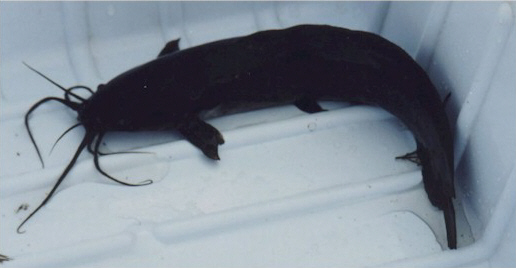
With a history of tales from the past and modern accounts of its incredible size, it’s safe to say that the tapah does a great job of preserving the legends surrounding it. Speaking of which…
The species is said to be part of a generational curse
…or blessing at the time the curse supposedly took place.
The tale of the curse began with Pak Kaduk, who was a skilled cockfighter from Perak in the 1400s. Cockfighting was so popular at the time, even the Sultan participated in it. Pak Kaduk himself was so good at the game, the Sultan personally challenged him.
Pak Kaduk nonchalantly accepted the challenge, agreeing to the Sultan’s condition of surrendering all his belongings if he lost. Pak Kaduk‘s chicken did actually win. However, the Sultan had added a rule beforehand allowing him to switch their chickens. This resulted in the Sultan technically winning, although with Pak Kaduk‘s chicken.

Not remembering the Sultan’s special rule, Pak Kaduk lost everything, including his family. With just his pet cat by his side, he went to grieve by the Sungai Perak. While resting there, his pet cat started to act strangely.
Intrigued by it’s behaviour, Pak Kaduk followed his pet cat to the riverbank. There, he came face-to-face with a giant ikan tapah. Curious as to why it’s stomach was bulging, Pak Kaduk cut it open and magically, gold started flowing out of the fish.
Grateful and believing it was a divine gift, Pak Kaduk sewed the fish’s stomach back together and released it into the river. He was so grateful in fact, he essentially cursed his family forever.
“Starting from today and onwards, I will no longer participate in cockfighting. Neither I, nor my wife, children, grandchildren, great-grandchildren, or anyone else, should harm, hurt, or mistreat the tapah fish. Whoever violates this oath shall suffer from skin ailments such as itchiness, burns, and swelling,” – translated excerpt from ‘Cerita Pak Kaduk‘, J.H. Locke
To undo the effects of eating ikan tapah, Pak Kaduk‘s descendants need to apply water blessed by three gold ornaments on their affected skin. Allegedly, these ornaments are part of the gold retrieved from the fish’s stomach. Till this day, they are kept within the family.
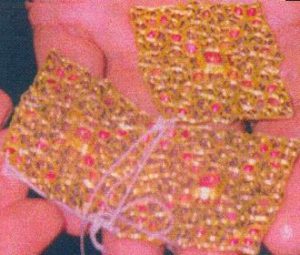
While the Pak Kaduk lineage is forever forbidden to consume the Tapah, the rest of the world is very much different.
Being sold as food is rapidly declining their population
Ever since ancient times, these giants have been sold and eaten as a prized food source. In the present, overfishing is their greatest enemy, causing almost none to reach the legendary sizes from the stories. Small ones are sold regularly, but large tapahs can be sold for thousands of ringgit.
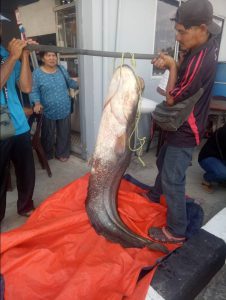
Additionally, industrial dams hinder their reproductive cycle by blocking their downstream migration towards wetlands to reproduce. Essentially, their declining population is erasing their tales from local communities.
I’ve seen them firsthand, and while they’re not very pleasing to look at, they are definitely incredible creatures. Their size is one thing, but its their history in Malaysia that makes them truly amazing.
I’ve been a nerd about animals forever, and learning that Malaysia has its very own River Monster (shoutout Jeremy Wade) makes me feel excited, yet proud inside. Maybe somewhere out there, there’s still a tapah waiting to inspire or even scare our future generations to come.
- 859Shares
- Facebook527
- Twitter39
- LinkedIn32
- Email54
- WhatsApp207



